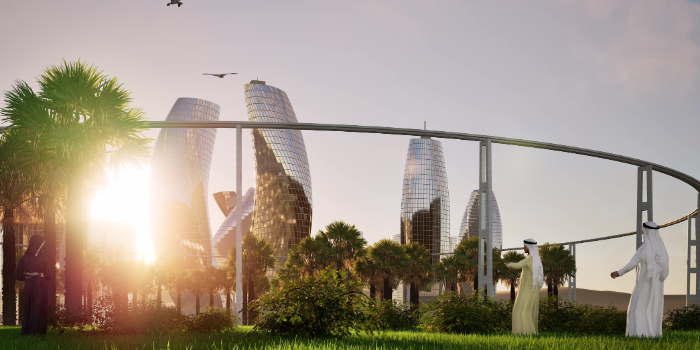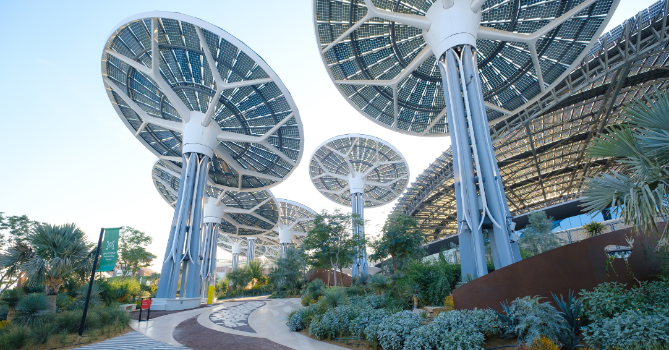
Designing for a Sustainable Future: Architects Role and Responsibilities
Welcome to our blog! Today, we're diving into the world of sustainable architecture and exploring the pivotal role architects play in creating eco-friendly structures. As concerns about climate change and environmental sustainability continue to grow, the demand for sustainable buildings is on the rise. In this article, we'll delve into how architects contribute to this movement, shaping the future of our built environment.
From innovative design strategies to the use of renewable materials, architects are at the forefront of creating buildings that minimize their environmental impact while maximizing efficiency and functionality. Join us as we uncover the ways architects are driving positive change in the construction industry and working towards a greener, more sustainable future for all.
Let's explore the fascinating world of sustainable architecture together!
Sustainable architecture is all about designing and constructing buildings that have minimal negative impact on the environment while promoting health and well-being for occupants. It's a holistic approach that considers factors like energy efficiency, water conservation, and the use of eco-friendly materials throughout the entire lifecycle of a building.
Architects who specialize in sustainable design aim to create structures that are not only environmentally friendly but also socially and economically viable. This means incorporating features like passive solar design, green roofs, and efficient insulation to reduce energy consumption and minimize waste.
In addition to reducing the environmental footprint of buildings, sustainable architecture also prioritizes the health and comfort of occupants. This can involve optimizing natural lighting, improving indoor air quality, and designing spaces that promote physical activity and mental well-being.
Overall, sustainable architecture is about finding balance between human needs and environmental responsibility. By harnessing innovative design techniques and leveraging advances in technology, architects can create buildings that not only meet the needs of today but also ensure a brighter, more sustainable future for generations to come.
Architects play a crucial role in driving sustainable design practices within the construction industry. They are responsible for envisioning, planning, and executing buildings that prioritize environmental conservation and resource efficiency.

One of the primary ways architects contribute to sustainable design is through thoughtful and innovative building design strategies. This includes incorporating passive design principles to maximize natural light and ventilation, as well as optimizing building orientation to take advantage of solar energy. By strategically positioning windows, shading devices, and insulation, architects can minimize the need for artificial heating and cooling, reducing energy consumption and greenhouse gas emissions.
Furthermore, architects select materials and construction methods with sustainability in mind. They prioritize the use of renewable resources, recycled materials, and low-impact building techniques to minimize environmental degradation. Additionally, architects advocate for the adoption of green building certifications, such as LEED (Leadership in Energy and Environmental Design), which provide guidelines and standards for sustainable building practices.
Beyond the design phase, architects also collaborate with engineers, contractors, and other stakeholders to ensure that sustainable principles are implemented throughout the construction process. They oversee the implementation of energy-efficient systems, water conservation measures, and waste management strategies to maximize the environmental performance of the building.
In essence, architects serve as champions of sustainability, driving innovation and advocating for environmentally responsible design solutions. Their expertise and creativity are instrumental in shaping the built environment in a way that promotes ecological health and resilience for generations to come.
While sustainable architecture offers numerous benefits, it also presents several challenges and opportunities for architects to overcome and capitalize on.
One of the main challenges architects face is the integration of sustainable design principles into traditional construction practices. This requires a shift in mindset and a willingness to adopt new technologies and methodologies. Additionally, limited availability of sustainable materials and higher upfront costs can pose barriers to implementation.
However, these challenges also present opportunities for innovation and creativity. Architects can explore alternative materials, such as recycled or reclaimed wood, bamboo, or rammed earth, to reduce environmental impact and promote local economies. Additionally, advancements in digital modeling and simulation technologies allow architects to optimize building performance and energy efficiency.
Another challenge is the need for interdisciplinary collaboration. Sustainable architecture requires input from various stakeholders, including engineers, contractors, and policymakers, to ensure successful implementation. Architects must navigate complex regulatory frameworks and engage with diverse communities to achieve consensus and support for sustainable projects.
Despite these challenges, sustainable architecture offers immense opportunities for architects to make a positive impact on the environment and society. By designing buildings that prioritize energy efficiency, water conservation, and occupant health, architects can contribute to a more sustainable future while creating inspiring and functional spaces for people to live, work, and thrive in.
The future of sustainable architecture holds promising trends that are poised to reshape the built environment and advance environmental stewardship.

One emerging trend is the integration of renewable energy sources into building design. Architects are increasingly incorporating solar panels, wind turbines, and geothermal heating systems into their projects to reduce reliance on fossil fuels and minimize carbon emissions. Additionally, advancements in building-integrated photovoltaics and energy storage technologies offer opportunities to create self-sufficient and resilient structures.
Another trend is the use of smart building technologies to optimize energy efficiency and occupant comfort. Internet of Things (IoT) sensors, building automation systems, and data analytics enable architects to monitor and control building operations in real-time, allowing for adaptive responses to changing environmental conditions and user preferences.
Furthermore, biophilic design principles are gaining traction in sustainable architecture. Architects are incorporating natural elements, such as green roofs, living walls, and daylighting strategies, to enhance indoor air quality, reduce stress, and foster connection with nature. By blurring the boundaries between indoor and outdoor spaces, biophilic design promotes human well-being while minimizing environmental impact.
In addition, circular economy principles are shaping the future of sustainable architecture. Architects are exploring innovative strategies for material reuse, recycling, and upcycling to minimize waste and extend the lifespan of building components. By adopting a cradle-to-cradle approach, architects can create buildings that are not only environmentally responsible but also economically viable and socially equitable.
Overall, these future trends in sustainable architecture reflect a growing commitment to holistic design practices that prioritize environmental stewardship, human well-being, and long-term resilience in the face of climate change and resource scarcity.
In conclusion, architects play a pivotal role in shaping the future of sustainable architecture. Through their innovative designs, collaborative efforts, and commitment to environmental stewardship, architects have the power to transform the built environment and create a more sustainable future for generations to come.
While challenges such as limited resources and regulatory constraints may present obstacles, architects have demonstrated their ability to overcome these barriers through creativity, resilience, and interdisciplinary collaboration. By embracing emerging trends such as renewable energy integration, smart building technologies, biophilic design, and circular economy principles, architects can continue to lead the way towards a greener, healthier, and more resilient built environment.
As we look to the future, it is clear that the role of architects in sustainable design will only become more vital. By harnessing the power of design innovation and collective action, architects can help pave the way towards a more sustainable and equitable world.